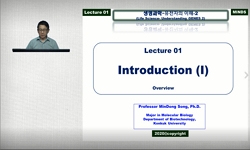Purpose: Many patients in South Korea are brought to hospitals by ambulance. As such, bacterial contamination within the ambulance and their critical or semi-critical equipment may be dangerous, especially for immunocompromised patients. No previous s...
http://chineseinput.net/에서 pinyin(병음)방식으로 중국어를 변환할 수 있습니다.
변환된 중국어를 복사하여 사용하시면 됩니다.
- 中文 을 입력하시려면 zhongwen을 입력하시고 space를누르시면됩니다.
- 北京 을 입력하시려면 beijing을 입력하시고 space를 누르시면 됩니다.

Bacterial Contamination Conditions in Ambulances and their Equipment in South Korea = Bacterial Contamination Conditions in Ambulances and their Equipment in South Korea
한글로보기https://www.riss.kr/link?id=A60027459
- 저자
- 발행기관
- 학술지명
- 권호사항
-
발행연도
2012
-
작성언어
-
- 주제어
-
KDC
500
-
등재정보
KCI등재
-
자료형태
학술저널
- 발행기관 URL
-
수록면
1-7(7쪽)
- 제공처
-
0
상세조회 -
0
다운로드
부가정보
다국어 초록 (Multilingual Abstract)
Purpose: Many patients in South Korea are brought to hospitals by ambulance. As such, bacterial contamination within the ambulance and their critical or semi-critical equipment may be dangerous, especially for immunocompromised patients. No previous studies have examined the distribution patterns of pathogenic bacteria in ambulances or the bacterial contamination rate associated with riding in an ambulance in South Korea. The purpose of this study was to determine the distribution of pathogenic bacteria species in ambulances, and to investigate the bacterial contamination rate associated with ambulances and their equipment, in South Korea. Methods: Thirty ambulances (17 from private facilities and 13 from regional emergency centers) were enlisted for this study. We took 955 swabs and isolated the resulting bacteria. We surveyed the intervals between cleaning and disinfecting of the ambulances and their equipment. We compared the distributional of the bacterial species, following Spaulding`s classification, between critical equipment (CE), semi-critical equipment (SCE) and non-critical equipment (NCE) in the ambulances, using the chi-square test. Results: The ambulances were cleaned and disinfected every 5 and 8 days, respectively. The equipment was cleaned and disinfected once every 22 and 30 days, respectively. Of the 955 swabs, 159 (16.6%) were found to be contaminated by bacteria. Fourteen pathogenic bacteria were isolated from the CE and SCE, but no methicillinresistant or vancomycin-resistant bacteria were found. Conclusion: Approximately 16.6% of the ambulances and their equipment were contaminated by bacteria, and pathogenic bacteria were found on both CE and SCE. Consequently, in South Korea, we find a risk associated with the hazard presented by bacterial contamination in ambulance CE and SCE.
동일학술지(권/호) 다른 논문
-
- 대한응급의학회
- ( Sung Woo Cho )
- 2012
- KCI등재
-
- 대한응급의학회
- 위대한 ( Dae Han Wi )
- 2012
- KCI등재
-
- 대한응급의학회
- 김갑득 ( Gab Teug Kim )
- 2012
- KCI등재
-
- 대한응급의학회
- ( Sang Min Jung )
- 2012
- KCI등재




 KISS
KISS






